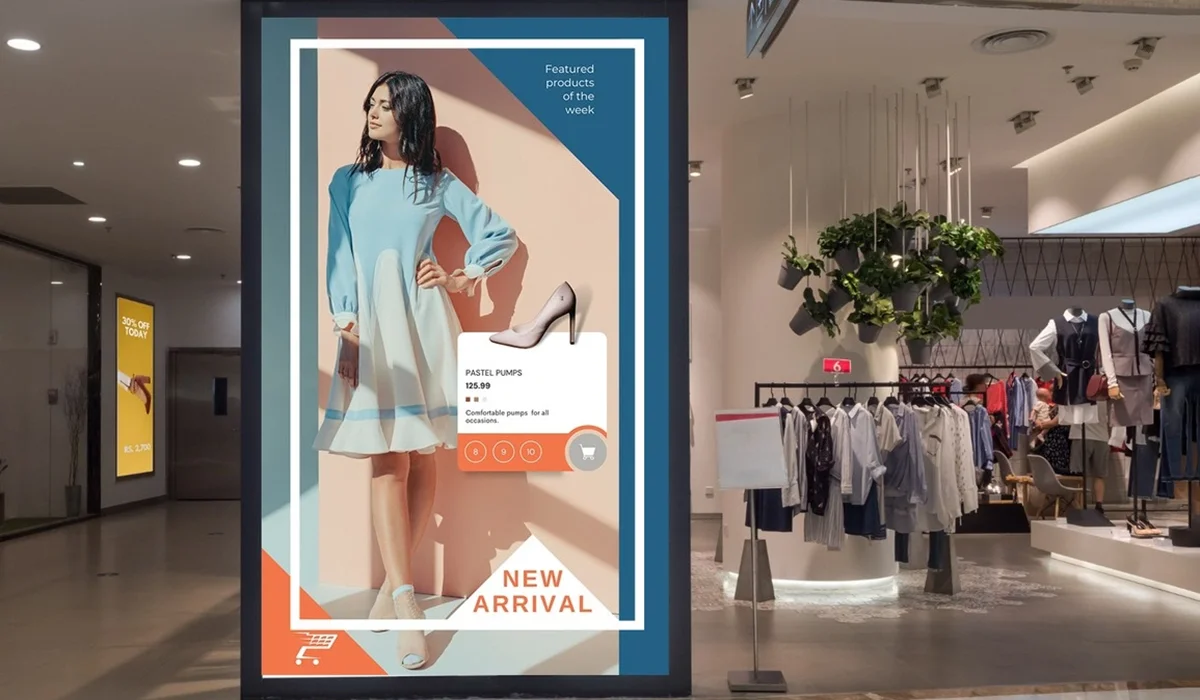If I ask you to name a soft drink brand, “Coca-Cola” comes off the top of my head. This instant brand recall demonstrates the meaning of top of mind in marketing – being the first brand people remember in a specific category. This concept, known as top-of-mind awareness, is crucial for brand dominance and product visibility in today’s competitive market.
Top of mind awareness marketing has proven to accelerate business growth significantly. Brands that secure this position capture larger market shares and build stronger customer loyalty. The goal extends beyond mere recognition – it’s about becoming the first choice in consumers’ minds, enhancing brand value and influence.
This detailed guide explores top of mind awareness, its business impact, and strategies to achieve it. You’ll discover psychological principles and practical steps that help build a lasting presence in your customers’ minds, ultimately boosting your brand equity and marketing effectiveness.
The Psychology Behind Top of Mind Awareness
The sort of thing I love is how our brains process and store brand information. Marketers need to know how to make their brands memorable by understanding the psychology behind top-of-mind awareness and the various brand recognition stages.
Understanding Consumer Memory and Recall
Our brains use three distinct memory systems that work together to create lasting impressions. These systems play vital roles in how consumers remember brands:
- Sensory Memory: Captures quick sensory impressions lasting just seconds
- Short-Term Memory: Holds current information we’re processing
- Long-Term Memory: Stores information for extended periods [1]
People remember descriptive brand names better than abstract ones. Trailblazing brands get better recall than market followers [1]. Research shows that 90% of viewers look at the dominant picture in an ad before reading any text. Visual elements are vital for memory formation and brand perception [1].
The Role of Emotional Connection
Emotional connections significantly affect brand recall and top-of-mind awareness. Content that appeals emotionally to consumers forms stronger memory associations. “State-dependent retrieval” shows that we remember information better when our current emotional state matches our state during the first brand encounter [1].
Nostalgia stands out as one of the most powerful emotional triggers in marketing. Brands like Coca-Cola utilize nostalgic elements to build strong emotional bonds with consumers [1]. This emotional connection goes beyond just feeling good – it creates lasting memory markers that make brands easier to remember and enhances overall brand trust.
Cognitive Processing and Brand Recognition
Brand information processing works in remarkable ways. Research shows that consumers process information differently based on their motivation and ability [2]. High motivation leads to better information processing and stronger memories, which is crucial for achieving top-of-mind status.
Scientists found the Mere Exposure Effect in the 1960s, which shows that people like familiar things more [3]. This effect works even subliminally – marketing can influence consumer behavior without conscious awareness [3].
Brand recognition needs consistency. Too many creative element variations can hurt marketing efforts [3]. This matches what we know about our brain’s mental shortcuts – or schemas – which help process brand information quickly [1]. Maintaining brand consistency across all touchpoints is key to staying top of mind with consumers.
Building a Top of Mind Strategy Framework
A systematic approach helps build a successful top of mind awareness strategy. Brands that deliver exceptional customer experiences generate 5.7 times more sales than their competitors. Let’s explore a framework that puts your brand at the vanguard of consumer consciousness and enhances your overall brand strategy.
Defining Your Brand Position
The foundation of top of mind awareness starts with a clear brand position. Understanding your unique market identity and differentiators makes all the difference. Research demonstrates that effective branding depends on consistent communication of your brand’s story and values, which is essential for top of mind marketing.
Your position should focus on:
- Building emotional connections with your audience
- Creating a clear brand purpose and mission
- Setting core values that appeal to customers
- Earning trust through consistent messaging
Identifying Key Touchpoints
Each brand interaction presents a chance to build relationships and create lasting impressions. People typically need seven interactions with a brand before making a purchase decision. Understanding these touchpoints is crucial for mapping the customer journey and maintaining brand visibility.
Brand touchpoints naturally fall into these categories:
- Real-life interactions
- Digital presence on online platforms, including social media
- Communication channels and messaging
- Direct interactions with brand representatives
Creating Memory Triggers
Memory triggers are essential tools that foster brand awareness and recognition. Emotional responses and lasting connections emerge from well-designed triggers. Visual and audio formats blend easily into digital content and contribute to overall brand perception.
Effective memory triggers need:
- Distinctive visual elements like logos and color schemes
- Memorable slogans highlighting solutions
- Stories that deepen customer connections
- Brand elements linked to specific emotions or solutions
A consistent implementation of these strategies on all channels creates an omnichannel presence. Your customers will find you on multiple touchpoints while experiencing a unified brand message. Regular market research and up-to-the-minute data analysis help identify new opportunities to maintain your brand’s strong presence in consumers’ minds and enhance your digital shelf presence.
Implementation Across Different Business Types
Our research shows how brand awareness strategies work differently for various business models. Success comes from understanding each business type’s unique traits and adapting top of mind strategies accordingly.
Strategies for B2B Companies
B2B marketing has a surprising emotional core. Research reveals that B2B buyers make decisions based on feelings, especially when big investments are at stake [4]. We create marketing campaigns that target specific pain points while balancing technical details with emotional appeal to enhance brand influence.
B2B decision-makers tend to do their research after hours – 73% according to our data [4]. This helps us time our outreach better. Email marketing proves especially powerful in B2B, with every dollar spent bringing back $38 [5]. These insights are crucial for developing effective top of mind advertising strategies in the B2B sector.
Approaches for B2C Brands
B2C brands thrive on memorable customer experiences. Customer experience became more important than price and products in consumer decisions by 2020 [5]. We suggest focusing on:
- Customized communication channels
- Consistent social media presence
- Loyalty program implementation
- Regular customer feedback loops
- Emotional brand storytelling
These approaches help B2C brands stay top of mind and enhance their overall brand reputation.
Local Business Applications
Local businesses build brand awareness best through community participation. Physical presence combined with digital strategies creates the strongest results. Local businesses benefit substantially from:
Simple gestures like birthday cards or milestone mailings create exciting moments for customers [5]. Loyalty programs work well locally and boost repeat business through word-of-mouth marketing [5].
Brand awareness works for businesses of all sizes and budgets [5]. We build systems to stay connected with leads and clients. Targeted follow-ups and segmented contact lists help create more customized engagement and maintain top-of-mind awareness.
Every business needs consistent brand messaging. Companies often struggle when they post content irregularly or send newsletters sporadically – this breaks customer trust [6]. Regular touchpoints and consistent value delivery keep businesses in their customers’ minds and enhance overall brand consistency.
Measuring Top of Mind Success
Our brand awareness measurement combines both classic and innovative methods. Let me explain how we track and analyze our brand’s position in the customer’s mind, including brand equity measurement and brand value calculation.
Traditional Measurement Methods
Brand recall surveys stand as one of the most reliable ways to measure top-of-mind awareness. Research indicates that your awareness score represents the percentage of respondents who name your brand first without prompting [7]. We use two types of survey questions:
- Unaided questions (spontaneous awareness)
- Aided questions (using logos or name lists)
The “spontaneous awareness rate” shows the percentage of people who mention our brand naturally when asked about companies in our market [8]. This is a key metric for understanding unaided awareness and overall top-of-mind status.
Modern Analytics Approaches
The digital world now offers sophisticated analytics tools that provide up-to-the-minute data analysis. Social listening has become valuable and helps us track brand mentions and sentiment on platforms of all types. Share of voice (SOV) measurement gives us a clear picture of our brand’s presence against competitors [9].
Branded search volume stands as one of our most powerful modern metrics. This metric reveals how many people search for our brand by name [9]. Google Analytics helps us analyze:
- Direct traffic patterns
- Organic search volumes
- Social media amplification
- Content engagement rates
These metrics provide valuable insights into our brand’s digital shelf presence and overall marketing effectiveness.
Key Performance Indicators
Several vital KPIs help us measure top-of-mind success. Our data shows that these metrics together paint a complete view of brand awareness [10]:
- Share of Voice (SOV): Shows our brand’s presence versus competitors in the market [10]
- Branded Search Volume: Points to strong brand presence and customer loyalty [10]
- Social Media Engagement: Measures mentions, shares, likes, and comments across platforms [8]
- Direct Traffic: Reveals the number of people who directly access our website without searching [8]
These metrics work together in interesting ways. Higher levels of direct traffic often associate with increased brand awareness and recall [9]. Regular monitoring of these KPIs helps us adjust strategies and distribute resources better [10].
Our analytics platforms process millions of data points quickly. This capability helps us spot trends and make analytical decisions about our brand awareness campaigns [11]. Success measurement goes beyond data collection – it reveals our brand’s position in the consumer’s mind and helps us understand our overall brand performance.
Common Challenges and Solutions
Modern marketing presents unique challenges to achieve and maintain top-of-mind awareness. Marketers face several common obstacles, and we have solutions that work to enhance brand differentiation and visibility.
Budget Constraints
Our research shows that 42% of Chief Marketing Officers now deal with reduced marketing budgets [12]. Marketing budget limits don’t mean you can’t make a big impact [13]. These strategies have proven to work:
- Data-informed decision making
- High revenue impact initiatives
- Resource-efficient campaigns
- Cross-channel synergy
- Avoiding one-off campaigns
Some high-impact marketing capabilities act as revenue multipliers that generate larger downstream effects from the original investments [13]. Referral programs tap into unpaid brand advocacy, while webinars make use of existing content resources to maximize ROI [13]. These approaches help maintain top-of-mind awareness even with limited resources.
Market Saturation
Products and services become commoditized quickly in today’s crowded marketplace [14]. Companies compete with larger corporations and smaller rivals who mainly focus on price. Market saturation creates a chance for differentiation rather than being a business killer [14].
Client relationships and experiences become your biggest competitive edge in saturated markets [14]. Consumers want to support companies that share their values, which makes this an excellent way to stand out [14]. By focusing on these aspects, brands can maintain top-of-mind status even in crowded markets.
Maintaining Consistency
Top-of-mind brand status needs continuous effort and a strategic approach [15]. Brands fade from memory if advertising or campaigns stop [16]. We concentrate on several key areas to stay consistent:
Regular market research helps us stay current with industry trends and consumer priorities [16]. This knowledge lets us spot new opportunities and adjust our strategies. Modern and flagship brands create memorable experiences by generating unforgettable, emotion-filled moments [16].
Slower periods give us a chance to prevent the ‘out of sight, out of mind’ problem [17]. Creating evergreen content and conducting detailed research works well during these times [17]. We keep engagement strong by:
- Evaluating customer interactions with our brand
- Streamlining customer service processes
- Creating content calendars that address year-round needs
- Conducting customer interviews to understand evolving challenges [17]
Our strategy needs to work together across multiple channels – what we call ‘omnichannel’ thinking [7]. This builds trust with our audience and creates recognizable uniformity [7]. Brands that reach top-of-mind status often achieve this through excellent customer experience [7].
Not Just Brand Recognition
Top of mind awareness goes beyond simple brand recognition. It’s about becoming the first choice in your customer’s minds. Our exploration of psychological principles, strategic frameworks, and implementation approaches shows how this marketing concept can powerfully impact businesses of all sizes.
You don’t need massive budgets or complex strategies to achieve top of mind status. Consistency, emotional connection, and authentic customer relationships matter more than advertising spend. Regular measurement of key metrics and adaptable strategies help maintain this coveted position even in saturated markets.
Building top of mind awareness is an ongoing process that evolves continuously. A clear brand positioning serves as your foundation. Create memorable touchpoints and maintain consistent communication across all channels. Your focus on delivering genuine value and building emotional connections with your audience will naturally position you as the first choice in your customer’s minds.
By implementing the strategies discussed in this guide, you can enhance your brand’s visibility, influence, and overall performance. Remember, the goal is not just to be recognized, but to be the first brand that comes to mind when customers think about your industry. With persistence and the right approach, you can achieve and maintain top-of-mind awareness, driving long-term success for your brand.
References
[1] – https://opentextbc.ca/introconsumerbehaviour/chapter/memory-retrieval/
[2] – https://business.columbia.edu/sites/default/files-efs/pubfiles/1969/johar.pdf
[3] – https://medium.com/choice-hacking/the-science-of-staying-top-of-mind-with-customers-b28e4d58d463
[4] – https://www.zoho.com/blog/general/header_b2b_blog_2.html
[5] – https://www.marketcircle.com/blog/6-tips-for-creating-a-top-of-mind-marketing-strategy/
[6] – https://masteryourwebsite.com/top-of-mind-marketing-d40f2b47996f
[7] – https://www.qualtrics.com/experience-management/brand/top-of-mind-awareness/
[8] – https://www.meltwater.com/en/blog/measure-brand-awareness
[9] – https://www.invoca.com/blog/12-metrics-you-need-to-measure-brand-awareness
[10] – https://smartyads.com/blog/brand-awareness-kpi
[12] – https://www.marmind.com/blog/marketing-on-a-tight-budget/
[13] – https://www.linkedin.com/pulse/overcoming-limited-marketing-budget-challenge-alex-gluz-scbqe
[16] – https://dreamfarmagency.com/blog/top-of-mind-brand-awareness/



